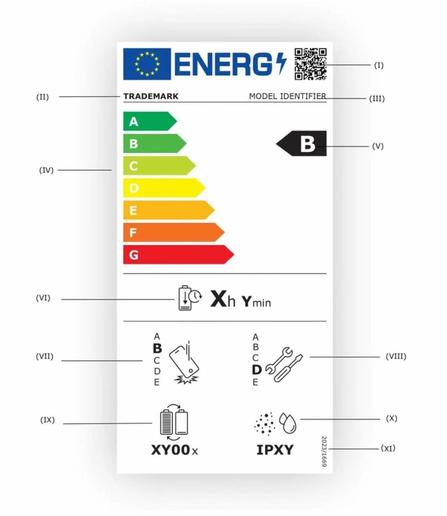The EU is introducing an energy label for phones, together with mandatory requirements for phones sold in the EU;
- 5 years of software updates (AFTER they stop selling the device in the EU)
- providing important hardware parts (during sale and for 7 years after), including free software (if needed), to every repair shop, within 5-10 business days
- batteries have to make 800 charging cycles and still be above 80% original capacity
And on top of that, phones and tablets need this energy label (which also includes a fall damage durability and repairability score), and abide by the above requirements, from 20 June 2025.
(https://energy-efficient-products.ec.europa.eu/product-list/smartphones-and-tablets_en)

Smartphones and Tablets
Product Energy Efficiency - Smartphones and Tablets. The 2023 regulations cover smartphones, feature phones, cordless phones and slate tablets. They do not apply to tablet computers, to products with flexible main display (roll-up), and to smartphones for high security communication. Energy labelling is foreseen only for smartphones and slate tablets.

 ☀️
☀️